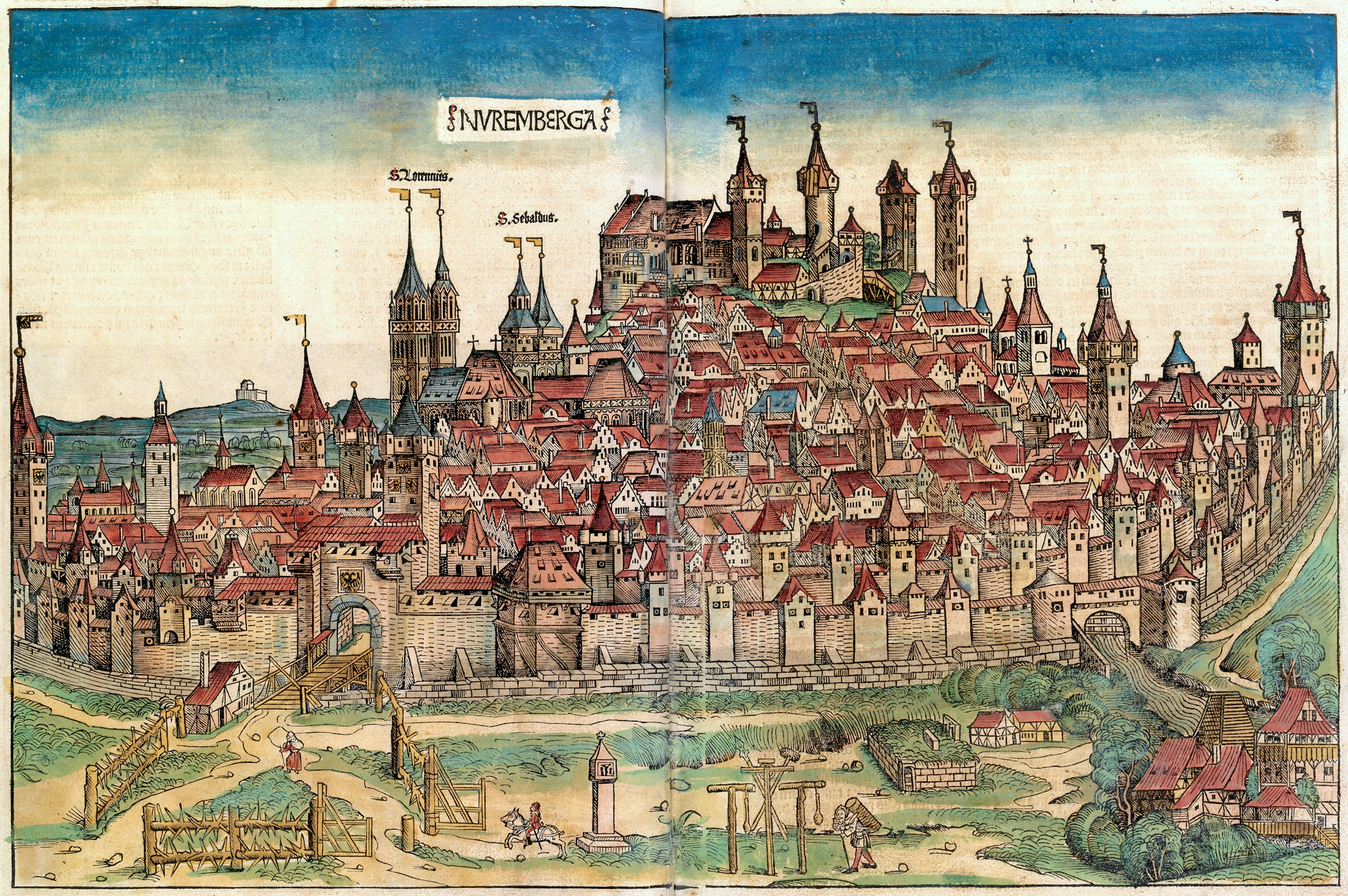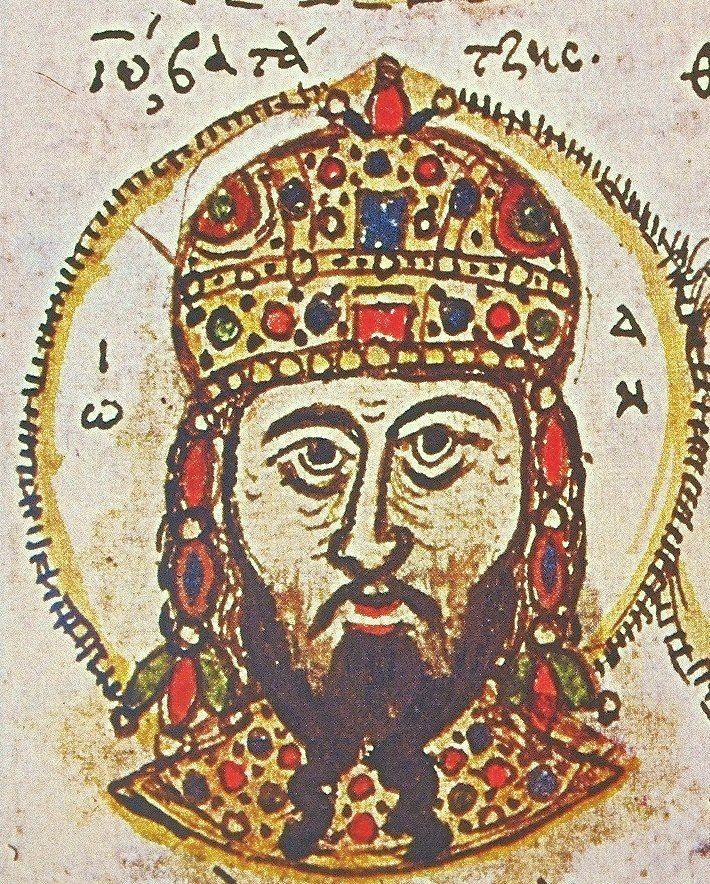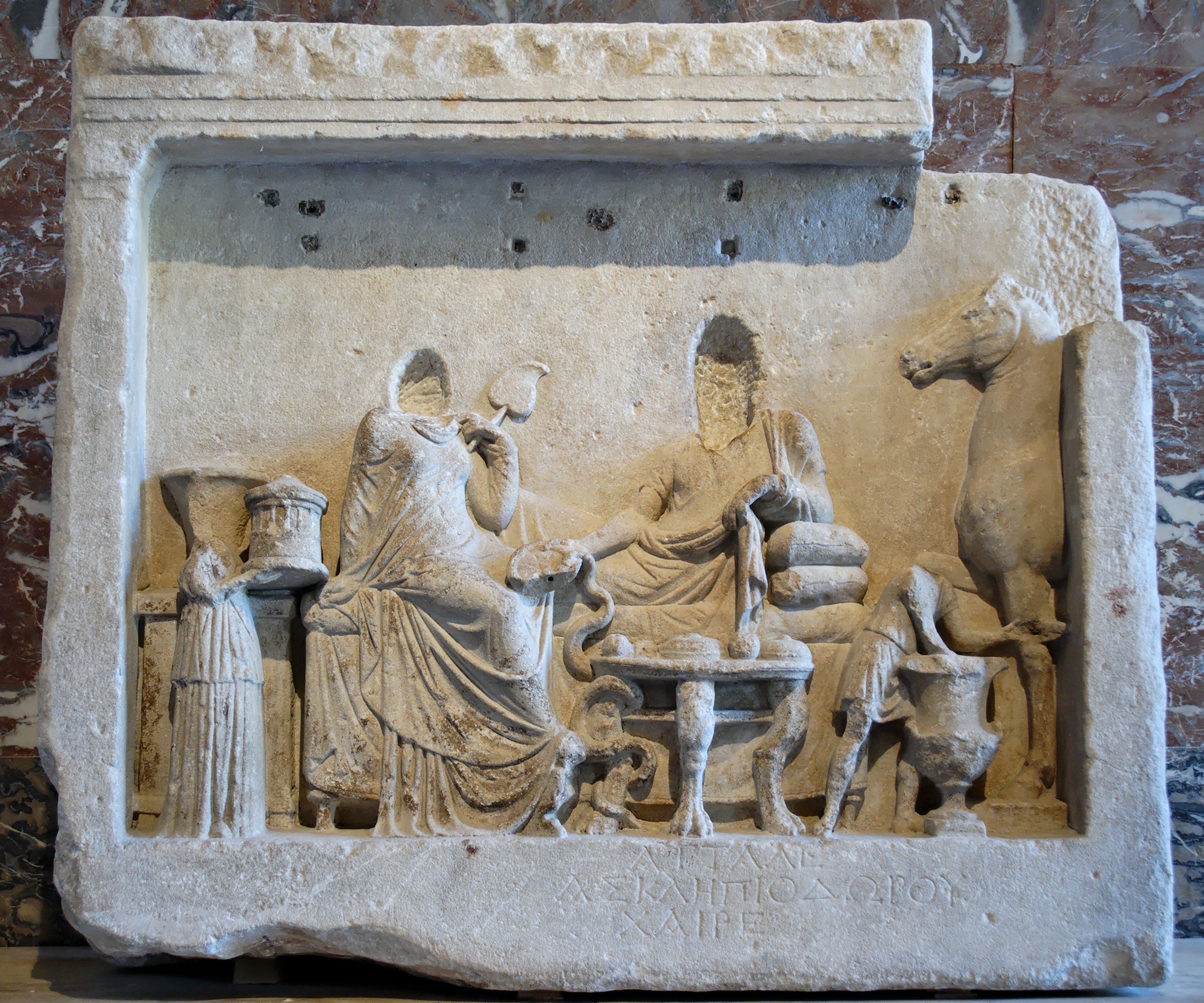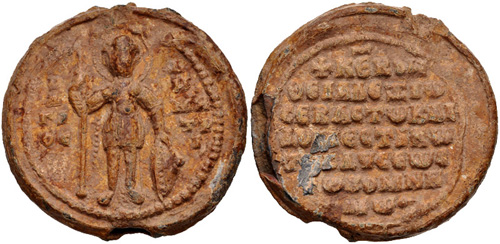|
Synopsis Chronike (Skoutariotes)
The ''Synopsis Chronike'' () is a 13th-century universal chronicle, from the Creation until the recapture of Constantinople by the Greeks in 1261. A. Heisenberg attributed the work to the Bishop of Cyzicus, Theodore Skoutariotes, and this identification has been generally accepted since, although it remains unverifiable. The chronicle comprises two parts, the first, ranging from the Creation to the accession of Alexios I Komnenos in 1081, being a typical chronicle, while the second, from 1081 to 1261, is a detailed historical account. A portion of the second part consists of excerpts from Niketas Choniates and George Akropolites, but the material derived from Akropolites includes much additional information, which George Ostrogorsky wrote "give the chronicle its real value as a source."Ostrogorsky, ''History of the Byzantine State'', translated by Joan Hussey (New Brunswick: Rutgers University Press, 1957), p. 371 The chronicle was first edited and published by the Greek scholar ... [...More Info...] [...Related Items...] OR: [Wikipedia] [Google] [Baidu] |
Universal Chronicle
A universal history is a work aiming at the presentation of a history of all of humankind as a whole. Universal historians try to identify connections and patterns among individual historical events and phenomena, making them part of a general narrative. A universal chronicle or world chronicle typically traces history from the beginning of written information about the past up to the present. Therefore, any work classed as such purportedly attempts to embrace the events of all times and nations in so far as scientific treatment of them is possible. Siegfried of Ballhausen was the first to use the title ''Historia universalis'' (universal history) in 1304. Examples Ancient examples Hebrew Bible A project of Universal history may be seen in the Hebrew Bible, which from the point of view of its redactors in the 5th century BC presents a history of humankind from creation to the Flood, and from there a history of the Israelites down to the present. The Seder Olam is a 2nd-ce ... [...More Info...] [...Related Items...] OR: [Wikipedia] [Google] [Baidu] |
Genesis Creation Narrative
The Genesis creation narrative is the creation myth of both Judaism and Christianity, told in the book of Genesis chapters 1 and 2. While the Jewish and Christian tradition is that the account is one comprehensive story, modern scholars of biblical criticism identify the account as a composite work made up of two different stories drawn from different sources. The first account, in Genesis 1:1–2:3, is from what scholars call the Priestly source (P), largely dated to the 6th century BC. In this story, Elohim (the Hebrew generic word for "god") creates the heavens and the Earth in six days, and then rests on, blesses, and sanctifies the seventh (i.e., the Biblical Sabbath). The second account, which takes up the rest of Genesis 2, is largely from the Jahwist source (J), commonly dated to the 10th or 9th centuries BC. In this story, God (now referred to by the personal name Yahweh) creates Adam, the first man, from dust and places him in the Garden of Eden. There, ... [...More Info...] [...Related Items...] OR: [Wikipedia] [Google] [Baidu] |
Alexios Strategopoulos
Alexios Komnenos Strategopoulos () was a Byzantine aristocrat and general who rose to the rank of ''megas domestikos'' and ''Caesar (title), Caesar''. Distantly related to the Komnenian dynasty, he appears in the sources already at an advanced age in the early 1250s, leading armies for the Empire of Nicaea against Despotate of Epirus, Epirus. After falling out of favour and being imprisoned by Theodore II Laskaris, Strategopoulos sided with the aristocrats around Michael VIII Palaiologos, and supported him in his rise to the throne after Theodore II's death in 1258. He participated in the Battle of Pelagonia, Pelagonia campaign in 1259, going on to capture Epirus, but his successes were undone in the next year and he was captured by the Epirotes. Released after a few months, he led the unexpected reconquest of Constantinople from the Latin Empire in July 1261, restoring the Byzantine Empire. He was captured again by the Epirotes in the next year and spent several years in captivit ... [...More Info...] [...Related Items...] OR: [Wikipedia] [Google] [Baidu] |
Constantinople
Constantinople (#Names of Constantinople, see other names) was a historical city located on the Bosporus that served as the capital of the Roman Empire, Roman, Byzantine Empire, Byzantine, Latin Empire, Latin, and Ottoman Empire, Ottoman empires between its consecration in 330 until 1930, when it was renamed to Istanbul. Initially as New Rome, Constantinople was founded in 324 during the reign of Constantine the Great on the site of the existing settlement of Byzantium, and shortly thereafter in 330 became the capital of the Roman Empire. Following the collapse of the Western Roman Empire in the late 5th century, Constantinople remained the capital of the Eastern Roman Empire (also known as the Byzantine Empire; 330–1204 and 1261–1453), the Latin Empire (1204–1261), and the Ottoman Empire (1453–1922). Following the Turkish War of Independence, the Turkish capital then moved to Ankara. Although the city had been known as Istanbul since 1453, it was officially renamed as Is ... [...More Info...] [...Related Items...] OR: [Wikipedia] [Google] [Baidu] |
Byzantine Greeks
The Byzantine Greeks were the Medieval Greek, Greek-speaking Eastern Romans throughout Late Antiquity and the Middle Ages. They were the main inhabitants of the lands of the Byzantine Empire (Eastern Roman Empire), of Constantinople and Asia Minor (modern Turkey), the Greek islands, Cyprus, and portions of the southern Balkans, and formed large minorities, or pluralities, in the coastal urban centres of the Levant and northern Egypt. Throughout their history, they self-identified as ''Ῥωμαῖοι, Romans'' (). Latin speakers identified them simply as Greeks or with the term Romaei. Use of Koine Greek, Greek was already widespread in the eastern Roman Empire when Constantine I () moved its capital to Constantinople, while Anatolia had also been Hellenization, hellenized by early Byzantine times. The empire lost its diversity following the loss of non-Greek speaking provinces with the 7th century Early Muslim conquests, Muslim conquests and its population was overwhelmingly ... [...More Info...] [...Related Items...] OR: [Wikipedia] [Google] [Baidu] |
Kaspar Ernst August Heisenberg
Kaspar Ernst August Heisenberg (November13, 1869November22, 1930) was a German Byzantinist. His son was Werner Heisenberg. Heisenberg came from a Westphalian family of craftsmen. He was the son of Wilhelm August Heisenberg (1831–1912), a locksmith (blacksmith) in and from Osnabrück, and Anna Maria Unnewehr (1835–1919). Education and career Heisenberg attended the public school and the council gymnasium in Osnabrück and studied philosophy and other subjects in Marburg from 1888 and from 1889 in Munich, where he turned to classical philology and especially medieval Greek under the influence of Karl Krumbacher. In 1890 and 1891 he also studied in Leipzig. During his studies in Marburg, he became a member of what is now the Marburg fraternity Rheinfranken. In 1892 he became a Bavarian citizen and passed the first part of the state examination for higher teaching posts. He received his doctorate in 1894 from Krumbacher in Munich (on the textual history of Georgios Akropolites) ... [...More Info...] [...Related Items...] OR: [Wikipedia] [Google] [Baidu] |
Cyzicus
Cyzicus ( ; ; ) was an ancient Greek town in Mysia in Anatolia in the current Balıkesir Province of Turkey. It was located on the shoreward side of the present Kapıdağ Peninsula (the classical Arctonnesus), a tombolo which is said to have originally been an island in the Sea of Marmara only to be connected to the mainland in historic times either by artificial means or an earthquake. The site of Cyzicus, located on the Erdek and Bandırma roads, is protected by Turkey's Turkish Ministry of Culture, Ministry of Culture. History Ancient The city was said to have been founded by Pelasgians from Thessaly, according to tradition at the coming of the Argonauts; later it received many colonies from Miletus, allegedly in 756 BC, but its importance began near the end of the Peloponnesian War when the conflict centered on the sea routes connecting Greece to the Black Sea. At this time, the cities of Athens and Miletus diminished in importance while Cyzicus began to prosper. Co ... [...More Info...] [...Related Items...] OR: [Wikipedia] [Google] [Baidu] |
Theodore Skoutariotes
Theodore Skoutariotes ( Latinized as Scutariotes; ; born ) was a Byzantine cleric and official during the reign of Michael VIII Palaiologos (). Skoutariotes was born in the latter half of the mid. As a deacon, he served as ''epi ton deeseon'' (receiver of petitions) and was named as '' dikaiophylax'' in 1270. He served as Michael VIII's ambassador to the Pope in 1277, and was metropolitan bishop of Kyzikos from 1277 until he was deposed in 1282 by Andronikos II (because he supported Michael VIII's efforts at union between the Catholic and Orthodox churches). Skoutariotes owned a rich library and is known from the notes in his collection of manuscripts. The German historian A. Heisenberg identified Skoutariotes with the anonymous author of the ''Synopsis Chronike'', a chronicle preserved in the Marcian Library in Venice (''Marc. gr.'' 407) which begins with the Creation and reaches to 1261. The chronicle is particularly valuable for its additions to the narrative of George Akr ... [...More Info...] [...Related Items...] OR: [Wikipedia] [Google] [Baidu] |
Alexios I Komnenos
Alexios I Komnenos (, – 15 August 1118), Latinization of names, Latinized as Alexius I Comnenus, was Byzantine Emperor, Byzantine emperor from 1081 to 1118. After usurper, usurping the throne, he was faced with a collapsing empire and constant warfare throughout his reign, Alexios was able to curb the Byzantine decline and begin the military, financial, and territorial recovery known as the Komnenian restoration. His appeals to Western Europe for help against the Seljuk Empire, Seljuk Turks were the catalyst that sparked the First Crusade. Although he was not the first emperor of the Komnenos, Komnenian dynasty, it was during his reign that the Komnenos family came to full power and initiated a hereditary succession to the throne. The son of John Komnenos (Domestic of the Schools), John Komnenos and a nephew of Isaac I Komnenos, Alexios served with distinction under three Byzantine emperors. In 1081, he led a rebellion against Emperor Nikephoros III Botaneiates and took ... [...More Info...] [...Related Items...] OR: [Wikipedia] [Google] [Baidu] |
Niketas Choniates
Niketas or Nicetas Choniates (; – 1217), whose actual surname was Akominatos (), was a Byzantine Greek historian and politician. He accompanied his brother Michael Akominatos to Constantinople from their birthplace Chonae (from which came his nickname, "Choniates" meaning "person from Chonae"). Nicetas wrote a history of the Eastern Roman Empire from 1118 to 1207. Life Nicetas Akominatos was born to wealthy parents around 1150 in Phrygia in the city of Chonae (near the modern Honaz in Turkey). Bishop Nicetas of Chonae baptized and named the infant; later he was called "Choniates" after his birthplace. When he was nine, his father dispatched him with his brother Michael to Constantinople to receive an education. Niketas' older brother greatly influenced him during the early stages of his life. He initially secured a post in the civil service, and held important appointments under the Angelos emperors (among them that of Grand Logothete or Chancellor) and was governor of ... [...More Info...] [...Related Items...] OR: [Wikipedia] [Google] [Baidu] |
George Akropolites
George Akropolites ( Latinized as Acropolites or Acropolita; , ''Georgios Akropolites''; 1217 or 1220 – 1282) was a Byzantine Greek historian and statesman born at Constantinople. Life In his sixteenth year he was sent by his father, the logothete Constantine Akropolites the elder, to the court of John III Doukas Vatatzes, emperor of Nicaea, where Akropolites continued his studies under Theodore Hexapterygos and Nicephorus Blemmydes. The emperor afterwards entrusted George with important state missions, as did his successors (Theodore II Laskaris and Michael VIII Palaiologos). The office of Grand Logothete, or chancellor, was bestowed upon him in 1244. He tutored Theodore II during the 1240s. As commander in the field in 1257 against Michael II, despot of Epirus, he showed little military ability. George was captured and kept for two years in prison, from which he was released by Michael Palaiologos. Meanwhile, Michael Palaiologos was proclaimed emperor of Nicaea, afterw ... [...More Info...] [...Related Items...] OR: [Wikipedia] [Google] [Baidu] |
George Ostrogorsky
George Alexandrovich Ostrogorsky (; sr-Cyrl-Latn, Георгије Александрович Острогорски, Georgije Aleksandrovič Ostrogorski; 19 January 1902 – 24 October 1976) was a Russian-born Yugoslavian historian and Byzantinist who was widely known for his achievements in Byzantine studies. He was a professor at the University of Belgrade. Early life and education Ostrogorsky was born in Saint Petersburg, Russian Empire, the son of a secondary school principal and a writer on pedagogical subjects. He completed his secondary education in a St. Petersburg classical gymnasium and thus acquired knowledge of Greek early in life. He began his university studies at the University of Heidelberg (1921), where he devoted himself initially to philosophy, economics, and sociology, though he also took classes in classical archaeology. His teachers included Karl Jaspers, Heinrich Rickert, Alfred Weber and Ludwig Curtius. His interest in history, especially Byzantine hi ... [...More Info...] [...Related Items...] OR: [Wikipedia] [Google] [Baidu] |





